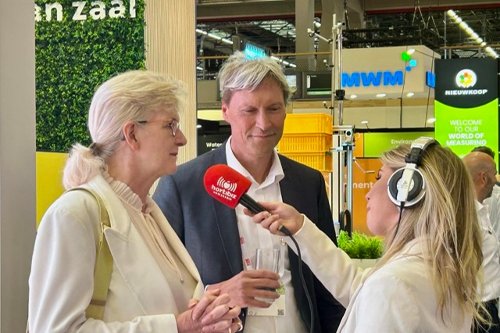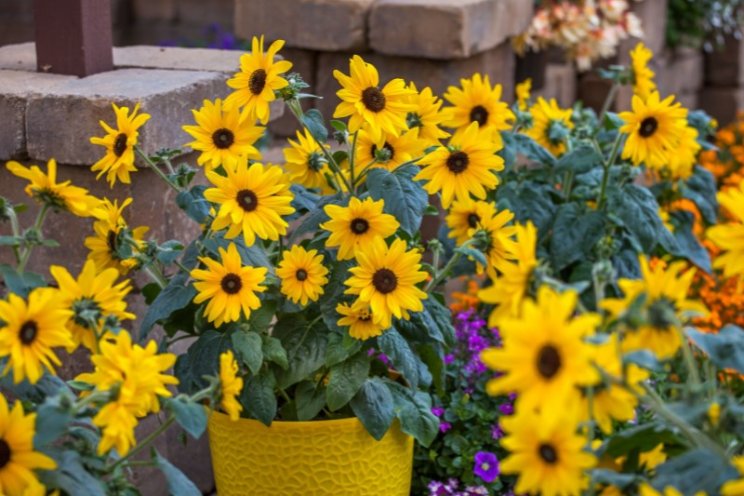Chengdu: Chinese insights on automation and data driven horticulture
Added on 09 December 2024

Automated systems and data analytics lay at the heart of this transformation. These are supposed to be tools that would revolutionize plant cultivation to make it more efficient, precise, and sustainable. Chengdu Expo made sure to highlight these exciting innovations, all of them underscoring a pivotal shift towards a high-tech, eco-conscious approach to meet the demands of urban environments and address global resource challenges.
Visitors to the Chengdu Expo were immersed in greenhouses equipped with cutting-edge technology: sensors monitoring soil moisture, light levels, and even plant health to maintain ideal conditions. By integrating artificial intelligence and automation, these systems are setting a new standard for sustainable horticulture. In one exhibit, a greenhouse managed irrigation and nutrient cycles autonomously, applying only the exact amount of water and fertilizer needed, preventing waste while maximizing yield. This precise, efficient approach reflects the shift towards data-driven horticulture that emerged as a key theme of the Chengdu convention, showing how technology can reduce environmental impact while meeting the growing demands of urban agriculture.
The Chengdu International Horticultural Exhibition 2024, held in the scenic city of Chengdu, China, was a large-scale, multi-month event that ran from late April to late October. Celebrated as one of the world’s premier horticultural expos, the exhibition was themed “Park City, Beautiful Habitat,” blending advanced horticultural technology with Chengdu's rich cultural and natural landscapes. The event featured over 100 themed pavilions and gardens from countries and regions worldwide, each showcasing distinctive plants, architectural styles, and landscaping practices that celebrate biodiversity, cultural heritage, and urban greening initiatives.
One of the expo's most captivating elements was its focus on sustainable and high-tech horticultural practices. The event highlighted how technology and eco-conscious horticulture could coexist harmoniously, attracting millions of visitors drawn to its interactive displays and immersive gardens. Visitors explored cutting-edge greenhouses equipped with automated systems, vertical farming exhibits demonstrating space-saving agriculture, and data-driven irrigation setups, each providing a glimpse into how urban areas can sustainably incorporate more greenery.
Precision Irrigation and Nutrient Management
Among the standout exhibits was a system that brought pinpoint accuracy to irrigation and nutrient distribution. The system used moisture sensors planted in the soil, which continuously monitored hydration levels and triggered irrigation only when necessary. This approach, guided by AI, ensured that every drop of water served a purpose, virtually eliminating waste. A similar system managed nutrient distribution, adjusting fertilizer delivery based on real-time soil data to avoid both undernourishment and the runoff issues that stem from over-fertilization. For an industry known for high resource consumption, these insights highlighted how data-driven irrigation can transform water and nutrient management
Climate Control for Optimal Microclimates
One of the main attractions was an automated climate control system that created tailored microclimates for each crop. Temperature, humidity, and CO₂ were fine-tuned by sensors, with AI algorithms capable of simulating different seasons to support optimal plant growth. Imagine a greenhouse producing lush tomatoes in the dead of winter, thanks to a system that replicates summer conditions. The technology promises year-round production in urban greenhouses, a potential game-changer for fresh food access in cities worldwide.
Predictive Health Monitoring
In a remarkable step forward, exhibitors demonstrated AI-driven crop health monitoring that could catch disease before it became visible. Cameras equipped with image recognition software scanned plants for minute color or texture changes, flagging potential issues before human eyes could detect them. This early intervention reduces crop loss and lessens the need for chemical treatments, offering a sustainable and cost-effective alternative for maintaining crop health.
Precision irrigation and climate control systems are increasingly used in Chinese greenhouses, especially in high-tech agricultural hubs like the Yangtze River Delta and the Pearl River Delta. Many greenhouses in these areas utilize sensors for real-time monitoring of soil moisture, temperature, and humidity. For instance, in high-tech agricultural parks like the one in Shouguang, Shandong Province, smart greenhouses use IoT technology to adjust irrigation and climate based on real-time conditions.
Automated Vertical Farming Modules
The Dutch pavilion’s vertical farming modules captured attention with their impressive efficiency. This system combined AI-driven light management, air circulation, and plant spacing within confined areas to maximize yield without excess energy use. LED lights automatically adjusted their intensity and duration to fit each plant’s needs, optimizing photosynthesis while minimizing energy consumption. By offering space-saving solutions, vertical farming opens the door to fresh, sustainable produce grown in urban settings—an exciting prospect for food security in metropolitan areas.
Urban vertical farming is still developing in China, but cities like Beijing and Shanghai have made strides, with some vertical farms already producing crops within city limits. These setups employ hydroponics, LED lighting, and controlled environments to cultivate leafy greens and other produce in urban spaces. Companies like SananBio, a major Chinese vertical farming tech provider, are expanding these solutions to meet urban food demand
Data-Driven Harvest Timing
Automation isn’t just about growing—it’s also about knowing exactly when to harvest. At Chengdu, data analytics was applied to predict harvest dates based on real-time growth data and historical comparisons, allowing for precise, high-quality harvests. This predictive approach not only saves time but also minimizes waste, as crops are harvested at peak maturity, resulting in better quality and shelf life for consumers.
The application of AI and data-driven disease detection is at an earlier stage in China but is gaining traction, particularly in controlled environments like greenhouses. Many agricultural tech companies are investing in AI tools that use machine vision to monitor crop health, although large-scale adoption is still limited to pilot projects and advanced greenhouses
Automated Pest Management
Finally, the expo showcased automated pest control systems designed to protect plants without the heavy use of pesticides. These systems monitored pest populations through pheromone traps and sensors, deploying beneficial insects or biocontrols only when needed. This eco-friendly approach reduces the environmental impact of horticulture, offering a glimpse into a future where pest control is effective, sustainable, and chemical-free.
In addition to that, China has seen a gradual shift towards eco-friendly pest control, using biological agents and reduced chemical treatments in both greenhouse and field agriculture. The Chengdu Expo emphasized sustainable pest management, and this approach is promoted in China’s “Green Agriculture” initiative. However, traditional pesticide use remains common, and biological controls are primarily used in areas focused on organic or export-quality produce.
As the Chengdu International Horticultural Exhibition 2024 comes to a close, it’s astonishing to see just how much knowledge and insight can be gathered in just a few short months. From groundbreaking automation systems to data-driven cultivation, the event underscored the speed at which horticulture is evolving. These innovations, once imagined as the distant future, are now setting standards that will inevitably force companies to keep pace or risk falling behind.
The horticulture industry is now a hotbed of innovation, continually challenging businesses to adapt and integrate cutting-edge technology into their practices. With each new development, the path forward grows clearer: sustainable, data-centric solutions are no longer a choice but a necessity. The future is bright and fast-paced for those ready to embrace it, promising a greener, more efficient world of horticulture.
Author: Daniel Ciurea
More news















